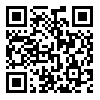Volume 2, Issue 2 (10-2021)
2021, 2(2): 47-61 |
Back to browse issues page
Download citation:
BibTeX | RIS | EndNote | Medlars | ProCite | Reference Manager | RefWorks
Send citation to:



BibTeX | RIS | EndNote | Medlars | ProCite | Reference Manager | RefWorks
Send citation to:
Iran-Nezhad P, Farideh Tehrani F. (2021). A Comparative Comparison of Preschool Education Curriculum in Iran and South Korea. Early Childhood Health And Education. 2(2), 47-61.
URL: http://jeche.ir/article-1-45-en.html
URL: http://jeche.ir/article-1-45-en.html
Abstract: (1797 Views)
Abstract Introduction: Preschool education improves in order to increase the efficiency and progress of educational conditions for children. The aim of this study was to make a comparative comparison of preschool education in Iran and South Korea. Research Methods: The purpose of this study was a user-based one and its nature was analytical-descriptive. The statistical population in this study was all documents existed in Preschool Educational Systems of Iran and South Korea consisted of articles and reports which were uploaded on website of Academic Center for Education, Culture and Research, documents on Ministry of Education website, theses related to the preschool systems of different countries which were recorded on irandoc website, and a collection of articles of scientific congresses all about preschool systems which have been held in 2020. The data were collected by library and note taking methods. Then the data were analyzed in a content descriptive-analytical manner in line with Jorj F Berdy's four-stage approach (description, interpretation, comparison and coherence). Results: Research findings indicate that enrollment in preschools in both countries is compulsory. Unfortunately, there is no rules and regulations for preschool instructors' admissions in Iran, the teachers often have low educational degrees and qualifications, and sometimes the retired staff are employed. In contrast, in South Korea, a two-year course along with university approval and higher qualifications are necessary for acceptance in preschools. The ratio of instructor to student in Iran is 1 to 25, though this ratio is 1 to 21 in South Korea, which considered as a significant numerical advantage. In terms of governmental funds and expenditures on preschool education, both countries have spent less budgets than developed countries. In Iran, educational space, environment and facilities are inadequate with regard to the age of the child compared with South Korea. In contrast to South Korea, management in Iran is more centralized and focused. Discussion: The shortcomings of preschool educational systems in Iran have reduced the quality of education and nursing the children. Therefore, these centers often do not have the necessary conditions and motivation for entering the preparatory period. It seems to be difficult to achieve appropriate development for these centers unless government shows a strong participation and investment. On the other hand, the quantity and quality of preschools education are facing very serious obstacles, especially with regards to children from low-income families and bilingual areas and provision of experienced educators, and all these become true along with proper culture development, more government participations, and improvement of quality and quantity of preschool centers.
Type of Study: Research |
Subject:
General
Received: 2021/06/20 | Accepted: 2021/07/11 | Published: 2021/10/2
Received: 2021/06/20 | Accepted: 2021/07/11 | Published: 2021/10/2
| Rights and permissions | |
 |
This work is licensed under a Creative Commons Attribution-NonCommercial 4.0 International License. |


